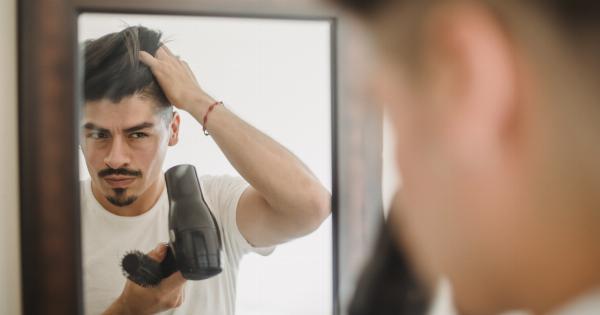Balding is a condition that affects millions of men worldwide. Hair loss can be a difficult experience to deal with, both physically and emotionally. When Matt first noticed his hair thinning, he felt lost and unsure of what to do.
But over time, he learned to embrace his balding head and find new ways to feel confident and comfortable in his own skin.
Stage 1: Denial
Like many men, Matt’s first reaction to losing his hair was denial. He convinced himself that it was just a passing phase, or that he was imagining things.
But as the bald spots on his head grew larger and more prominent, he realized that this was a real issue that needed to be addressed.
At this stage, Matt found himself becoming more self-conscious than ever before. He would avoid mirrors and cameras, and would refuse to leave the house without a hat or cap to cover his head.
He felt like he was losing a part of his identity, and struggled to accept what was happening to him.
Stage 2: Anger
The next stage of Matt’s experience with balding was anger. He was furious that this was happening to him, and that there seemed to be nothing he could do about it.
He felt like he was being robbed of his youth and vitality, and he lashed out at those around him.
During this stage, Matt began to withdraw from his social circles. He stopped going out with friends, and stopped trying to meet new people.
He just didn’t feel comfortable in his own skin anymore, and he didn’t want anyone else to see him like this.
Stage 3: Bargaining
As time passed, Matt began to move past his anger and into the third stage of his experience: bargaining. He started exploring different balding treatments, like lotions and shampoos, and even considered hair transplants.
He became obsessed with finding a way to stop his balding, and spent hours researching different options online.
At the same time, he also began to accept that he might never get his hair back. Instead of seeing this as a defeat, he started to think about how he could adjust his lifestyle to accommodate his new look.
He started following balding influencers online, and found ways to embrace his baldness with confidence.
Stage 4: Depression
During this stage, Matt struggled with feelings of sadness and hopelessness. He was mourning the loss of his hair, and he felt like a part of him had died. He began to feel like he would never be able to feel confident or attractive again.
At this stage, Matt needed support more than ever. He turned to his family and friends for comfort, and they helped him see that his worth was not tied to his hair.
They encouraged him to explore new hobbies and interests, and to find ways to feel good about himself that didn’t involve his appearance.
Stage 5: Acceptance
The final stage of Matt’s experience with baldness was acceptance. He realized that his hair loss was just a part of who he was, and that it didn’t define him as a person.
He started to feel comfortable in his own skin again, and he stopped feeling like he needed to hide behind hats and caps.
Instead, Matt began to embrace his baldness as a unique part of his look. He started wearing more accessories, like sunglasses and earrings, that drew attention away from his head.
He also started experimenting with new clothing styles, and found new ways to express his personality.
Tips for Adjusting to Baldness
If you’re dealing with balding like Matt was, there are some strategies that you can use to adjust to your new look. Here are a few tips that might help:.
1. Find support
Don’t be afraid to lean on your loved ones for support during this difficult time. Seek out friends or family members who have gone through similar experiences, and talk to them about how they coped.
You may also want to look into support groups online, where you can connect with others in a similar situation.
2. Embrace other aspects of your appearance
Remember that your worth is not tied to your hair. Focus on other areas of your appearance that you feel good about, like your eyes or your smile.
You may also want to experiment with new fashion accessories or clothing styles that highlight your unique personality.
3. Practice self-care
Balding can be a stressful experience, so it’s important to take care of yourself both physically and emotionally. This could mean going for regular exercise, or practicing relaxation techniques like yoga or meditation.
You may also want to consider talking to a therapist about your feelings of loss or anxiety.
4. Consider hair treatments
If you’re not ready to embrace your baldness just yet, there are plenty of hair treatments out there that might help. From hair regrowth shampoos to hair transplants, there are many options to explore.
Just be sure to do your research and talk to a medical professional before trying any new treatments.
5. Embrace your baldness
Ultimately, the key to adjusting to baldness is to embrace your new look. Remember that your hair doesn’t define you as a person, and that you can still be attractive and confident without it.
Take the time to experiment with new styles and find what makes you feel good about yourself, and don’t be afraid to show off your baldness with pride!.
























